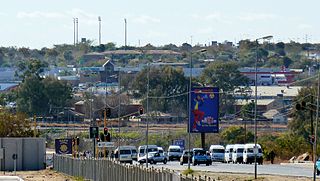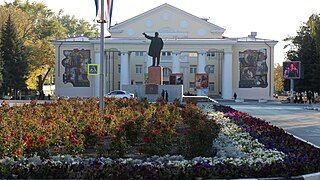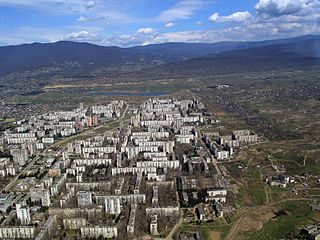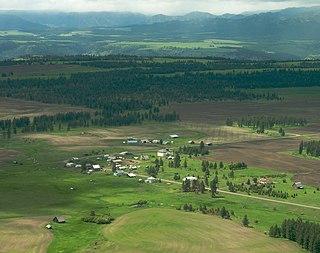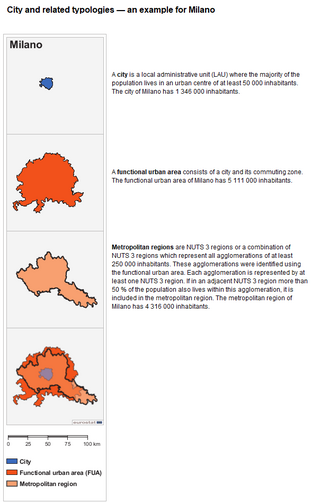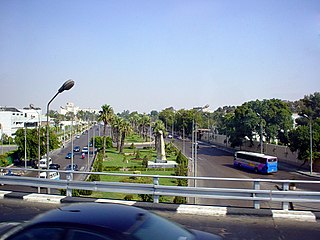History
During the Kievan Rus' period, settlements which were located in strategic places, such as confluence of rivers or sitting on important routes grew in importance and transformed into towns. Concurrently they became gravity center of political, economic and military power. From the 10th century markets and handicraft trade developed, a process which contributed to the growth of towns and around them grew settlements which were suburbs of the core town, [1] gravitated towards them [2] and were called ( Posad ). In some cases, cities of Kievan Rus' had radial structure made of two parts, one is the Kremlin and the other the Posad. [3] In connection with these processes the number of dwellers in towns increased. These cities of the Kievan Rus' military fortifications built by the princes so that the population can escape there in case of Nomadic raids. [4] The core city fortresses, known as Kremlin were built in strategic places, elevated from its surroundings, often located in the confluence of rivers or lakes. [4] The Kremlins were not only the fortress itself but a defined area in the city center which gathered in it range of buildings of political, religious and social importance. While some were built from wood, they were later rebuilt from stone and were surrounded by moats and earthworks fortifications. [5] In the case of Veliky Novgorod, one of the important cities of ancient Russia, streets were built from north to south and sometimes several buildings were connected to each other forming voids between them. [3] In Ryazan, after 1350, there was a change in the trend of urban planning with clearer divisions based on social status and professional affiliation, which implied on a politically strong prince. [3]
Following the formation of the centralized Russian state and its military as well as its expansion towards the east, new military-defensive towns and cities which were constructed in the newly aquuired lands. [6]
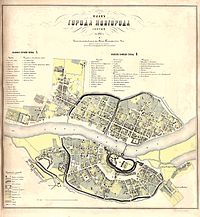
The emergence of new cities continued further in the 16th century and 17th century, during the Tsardom of Russia, and during the second half of the 16th century 50 new cities appeared, while by the mid 17th century there were 254 cities in total, of them about 180 had status of Possad. [7] Yet, urban planning concepts and regulations such as location of the buildings relatively to the terrian, sufficient distance between them and accurate parcellation were not integral part of the system. Following the rise to power of Peter I the Great and his Far-fledging reforms, urban planning system in the Russian Empire went through major overhaul with the introduction of new concepts and regulations. Those reforms occurred altogether with the enhancing of the regional and local administration system [8] On 16 January 1721, Articles of Chief Magistrate were published, which laid down the basics principles of city types categorization, ranking them by parameters of geographic location and population. Another major change occurred in the first half of the 18th century with the rising of the "regularity" concept, which called for creation of grid plan cities with emphasized ensembles and geometry trend. [9] The city plans which came into force from now on were geometrically lined, creating perpendicular streets, which was influenced, among others by the philosophy of Descartes by the French military engineer Sebastien Vauban. [8] New city plans were signed off for different cities throughout the Russian Empire such as Tver, Tula, Kaluga, Kostroma, Kolomna, Vladimir, Yaroslavl and Yekaterinburg. [9] The urban planning went into much more details with Emperor Peter the Great, Catherine the Great and Alexander I have put their signatures on various general city plans which regulated the width of central streets, straightened streets and called for high level of aesthetics and composition. [10] The city plans were developed by various architects and planners, among them William Heste, Matvey Kazakov, Ivan Starov, Vasily Bazhenov, Petr Nikitin and others.
Soviet period

Following the October Revolution and the establishment of the Soviet Union, urban planning in Soviet Russia went through massive changes. Huge emphasis was given to the creation of industrial base and urbanization with mass influx of populations from rural areas to the cities. Old cities grew and expanded beyond their historical borders and completely new cities created from scratch. The Soviet government distanced itself from the old concepts inherited from the Tsarist period and already in 1918, a decree which abolished private ownership in urban areas came into force, [11] practically municipalizing and nationalizing large parts of the housing stocks. While the Soviet government called for the upbringing of the workers and farmers at the expense of the old bourgeoisie, even by 1925 there was no centrally imposed, unified concept of urban planning. [12] Formulating steps were taken in the form of the enactment of the Statue on Urban Land Management of 13 April 1925 which laid down the foundations of the urban planning system which placed the lands and the city plans under the jurisdiction of the city councils which had the authority to issue construction leases based on it. [13] The 1920s and 1930s saw many reforms related to urban planning and new master plans (city plans) for urban settlements across Russia and the other republics of the Soviet Union with the help of large design institutes, among them Moscow-based Giprogor Russian Institute of Urban and Investment Development, Leningrad-based Russian State Research and Design Institute of Urbanism, Gorstroyproyekt (Russian: Горстройпроект) and Giprograd (Russian: Гипроград). [14] Noteworthy is the Moscow 1935 Master Plan. Another major law regulating and directing the urban planning in the country was the All-Union Law On Regional and City PLanning and law On Preparation and Approval of Plans for Design and Socialist Reconstruction of Cities and Other Populated Places adopted in 1933. [15] The Soviet government pushed for regulation and uniformity of planning and design, standardizing the rules and centrally imposed concepts to all the republics of the Soviet Union. [16] Settlements were planned and treated as centrally planned component being part of the national economic system, often destroying the uniqueness of them in favour of standardization. [17]
The Second World War halted many of the urban planning activities as the authorities have allocated the entire resources to the war efforts, urbanization especially in cities deeper in Russia continued, as a result of the relocation of factories into them, which led to the relocation of population employed in those factories and the construction of new workers' settlements around those cities. [18] As the war management consumed most of Stalin's time and efforts, urban planning decision which previously were handled by him, were not taken care by Chairman of the Presidium of the Supreme Soviet, Mikhail Kalinin. [19] Already before the end of the war, in 1943, city planners began proposing their concepts for the rebuilding of the cities destroyed in the fighting, such as Volgograd. [19]
After the war urban planning politics continued again, alongside the massive reconstruction efforts. The post-war period was marked by active urban planning activities related to the transformation of the historically established settlements together with the emergence of new cities. In order No. 294 of the Committee for Architecture under the Council of Ministers of the USSR issued on 31 March 1949, special attention was paid to improving the quality of design and planning work, city planning projects. The importance of urban improvement and the introduction of standard projects was emphasized. [20] The meeting of the Central Committee of the CPSU and the Council of Ministers of the USSR convened an All-Union Conference of Builders and City Planners. The meeting which took place [21] in April 1958 discussed the pressing problems of planning and urban development and outlined ways to solve them. In 1959, the relevance of this problem at the 22nd Congress of the CPSU was emphasized by Khrushchev, who advocated for the massive construction of pre-fabricated apartment buildings of 5 floors and nicknamed Khrushchevka , designed by the architect Vitaly Lagutenko in order to overcome to extreme housing deficit. In May 1961 the Third All-Union Congress of Soviet Architects convened and called for accelerating the approval of general city plans. [22] The general tendencies from the 1960s until the dissolution of the Soviet Union saw continued expansion of the outer areas of the cities with construction of even higher apartment buildings nicknamed Brezhnevki . [23]
Russian Federation
1991-2000

Following the dissolution of the Soviet Union in December 1991, urban planning system in Russia went through dramatic change. Due to the country's move to a more liberalized, market economy, the political preferences and direction for the urban planning has changed as well with the state needed to address marketization and regionalization issues. [24] The economic policies implemented by successive Russian governments in that period led to spatial inequality by which certain groups in a given city experienced increase in their district while other groups experienced sharp decline. [25] The country went through major changes including in its urban planning system and the ideological layer, of constructing a Socialist city was eliminated, [26] yet the planning pattern of the Soviet period which implied construction of tall buildings with high density continued as in the Soviet period, though with more emphasis on leisure and aesthetics in later periods. In the 1990s-2000s, the rush demand for housing in large cities led to an increase in the height and density of buildings. In all major cities of Russia, 25 or more storey residential buildings began to be built. The so-called "densification development" has become widespread, which increases the load on urban infrastructure and negatively affects the aesthetics of the urban environment. The extensive growth of built-up urban areas and urban sprawl due to the reproduction of Soviet microdistrict development also continued. Another trend is the construction of residential and office real estate in former industrial zones. [27] [28] [29] The economic liberalization also led to the growth of street markets and retail trade activities, either regulated or not. [30]






